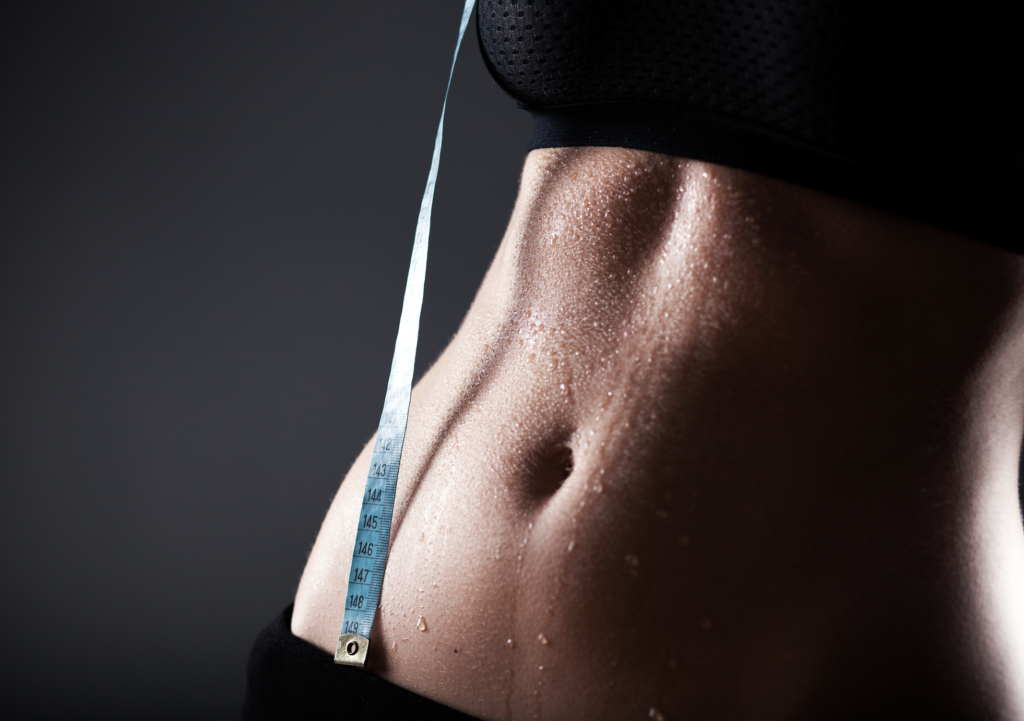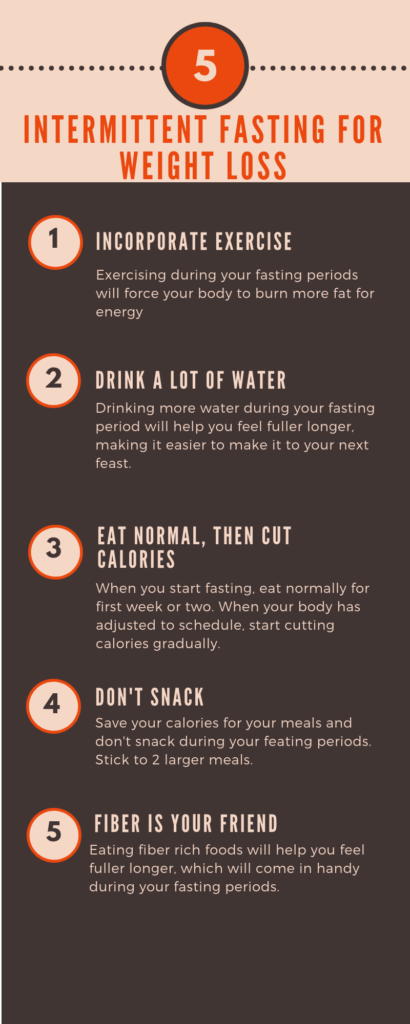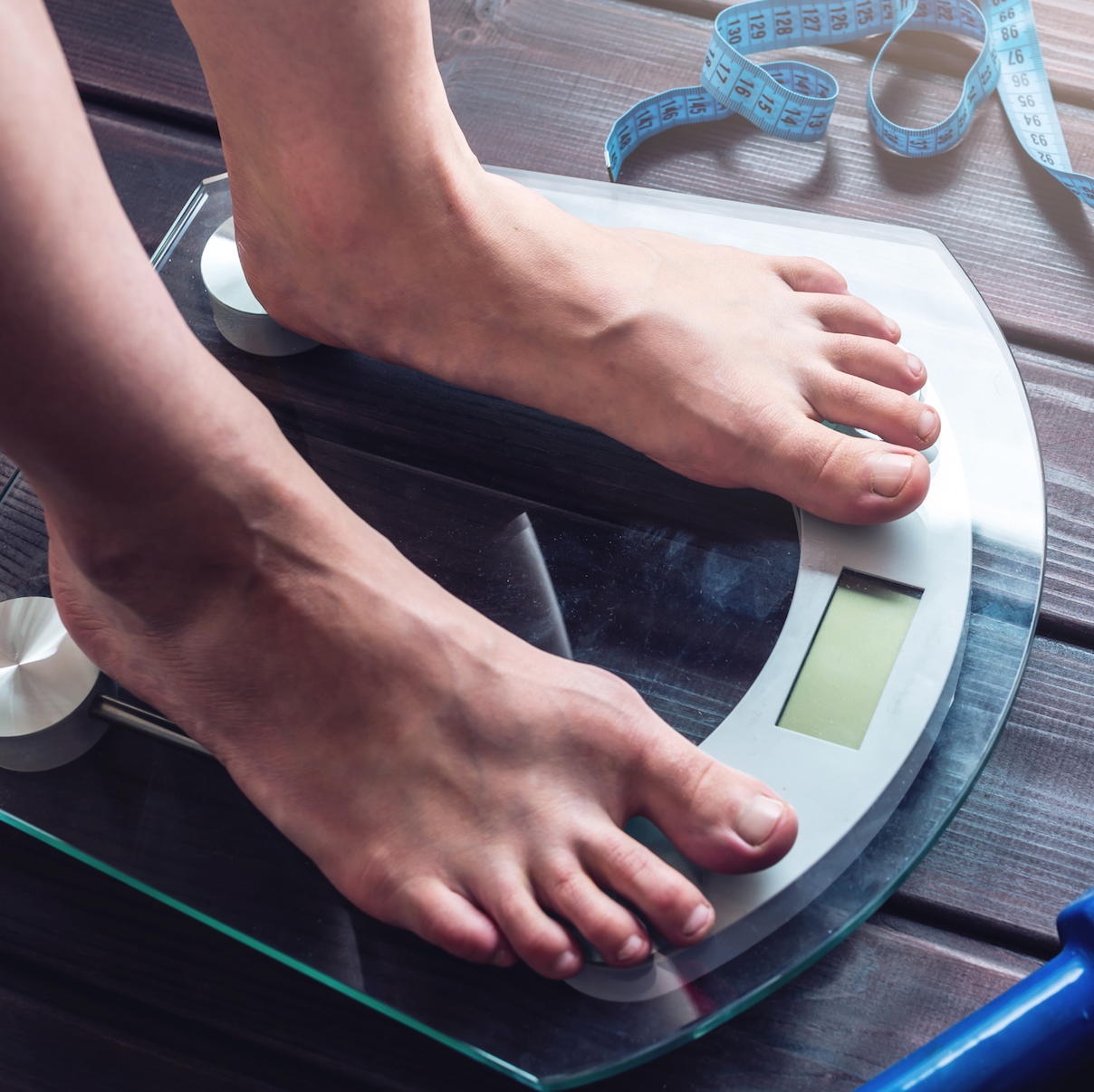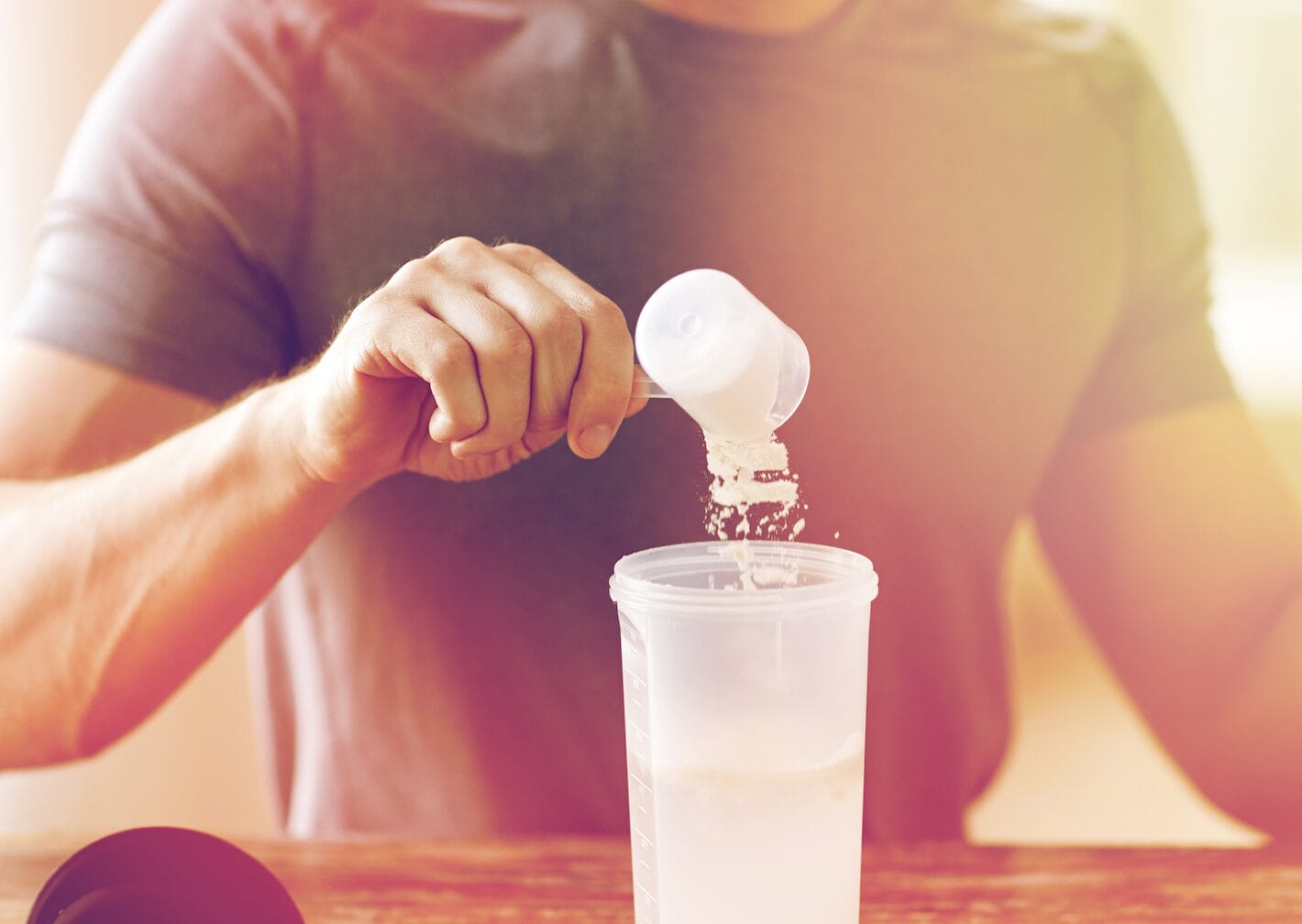
Although intermittent fasting seems to be a flavor of the week in the dieting world, it’s actually been around for some time. There’s a good deal of science showing that it can help with weight loss while also providing several other health benefits at the same time.
In order to reap the benefits though, it’s important to know how to do intermittent fasting correctly.
The great thing about this dieting technique is that it’s really easy to understand. But just because you know the rules, doesn’t necessarily mean you’re going to be successful.
Ever heard the saying “it’s easier said than done”? Well, I think intermittent fasting might fall in that category.
That’s why I wanted to share a few tips I’ve learned along the way to help you maximize your gains. When done correctly, there is no denying that this technique can be highly effective.
What Is Intermittent Fasting?
Intermittent fasting isn’t really a diet plan because it doesn’t dictate what foods you can and can’t eat (and this is why it’s so great in my opinion). There’s also no calorie counting or points involved.
This system is really more of an eating schedule than anything else. I’m going to say that again because it’s important: intermittent fasting is an eating schedule, not a diet!
It’s a schedule that you set up breaking your day into eating times and fasting times. During your fasts, you don’t eat anything. When you’re not fasting, you are allowed to eat anything you want. And that’s really all there is to it.
There are a few popular fasting programs out there. Here’s a quick review:
- 16/8 schedule: with this program, you are fasting 16 hrs a day and only eating during the remaining 8 hrs
- 5/2 schedule: this program allows you to eat normally 5 days a week and fast on 2 nonconsecutive days- depending on the program, you may be allowed to eat a few hundred calories on the fasting days, but others are strictly calorie-free liquids (water, black coffee)
- Alternate day fasting: this program has you eat normal one day and then fast the next- you continue to alternate days for as long as you wish
The 16/8 protocol is the most popular and probably the easiest way to implement fasting into your routine. I recently started this plan in an attempt to “clean myself up” a little before the holidays.
You can start your feasting window anytime you want as long as you are going a full 16 hrs without eating during each 24 hr period.
The most popular schedule is to eat between 12 pm and 8 pm each day.
What this effectively does is cut out breakfast. Which was (and still is) difficult for me because I love breakfast. My wife actually believes that the thought of breakfast is the only reason I get out of bed in the morning.
There could be some truth to that. But cereal, bagels, eggs, bacon, more cereal… so good.
Sorry I got lost there. Back to the fasting. So with this 16/8 split, you are really cutting out one meal each day. And in this case, that meal happens to be breakfast.
Another less popular schedule is eating from 8 am to 4 pm and fasting until 8 am again. This schedule lets you eat breakfast, but you have to finish dinner by 4 which could get tricky for a lot of us.
Right off the bat it makes sense to me why this fasting method would work. Cutting out one meal per day should instantly cut a lot of calories out of your diet. Especially if you are like me and like to eat a bunch of carbs in the morning.
I know what you’re thinking because I thought the same thing before I started trying this: “but isn’t breakfast the most important meal of the day?”
Turns out no. Cereal manufacturers and other breakfast food suppliers want us to think that and have spent a boat load on marketing over the years to get that point across.
But research is showing it’s ok for us to skip breakfast. It’s actually more than ok, it’s downright good for us to skip breakfast sometimes. Especially if we are trying to lose weight.
When our bodies are fasting, a lot of things happen, especially with our hormone levels. For one, our insulin levels decrease, making the insulin in our blood more efficient at controlling our blood sugar levels.
This plays an important role in burning more stored fat for energy. For more info on the bodily changes that occur during fasting, check this article out.
Research has suggested that intermittent fasting can help with a lot of other stuff other than weight loss too (especially if you include supplements like turmeric curcumin), including:
- Improved cardiovascular health
- Lowering risk of developing type II diabetes
- Decreased risk of neurological disorders (like Alzheimer’s)
- Decreased risk of cancer
But we’re here to talk about fasting specifically for weight loss. If you’re interested, you should look into the other health benefits too, it’s pretty amazing.
Here is another nice article that sums up a lot of the research being conducted. Just keep in mind that this research suggests that intermittent fasting can provide these benefits- there’s still a lot more research needed to prove that it has these effects.

5 Tips To Help You Maximize Weight Loss During Intermittent Fasting
#1 Incorporate Exercise
Intermittent fasting is a great plan to help you start losing pounds immediately simply by abiding by the eating schedule. But if you exercise while you are on a fasting plan, you will see faster and more robust results.
The timing of the exercise isn’t crucial to your success, but if you can exercise during your fasting period, your body is going to be forced to burn more fat for energy.
Think about it- when you exercise, your body starts off looking for glucose and then glycogen to burn for energy. If you exercise during a fasting period, your glucose/glycogen levels are going to be much lower than if you had recently eaten a meal.
This means your body is going to have to start burning fat to fuel your workout.
Burning more fat is great and probably almost everyones primary exercise goal.
Just beware that depending on what time you exercise, you might have to go several hours before you get to eat again. Exercise has a tendency to make us more hungry, so be careful!
If you have the time, it would be great to exercise between 10-11 in the morning. That would you could workout on an empty stomach, but wouldn’t have to wait too long before you get to eat again.
Personally, I have to workout first thing in the morning. That means I’m exercising from 6-7 am. That also means I have to wait 5 hours after my workout before I get to eat anything (eating between 12 – 8 pm).
I’m not going to lie, this was pretty tough the first few days. But after I got used to the idea of not eating breakfast, it got a little easier. Our appetite and hunger is largely affected by routine- our bodies get used to eating at the same time each day.
Once your body learns that you aren’t eating in the morning, your brain will stop telling you you are so hungry.
This brings me to tip #2…
#2 Drink A Lot Of Water
Proper hydration isn’t only important for maintaining all of our bodily functions, but it also helps you feel fuller during the fasting periods. I unintentionally started increasing the amount of water I was drinking to keep me from eating.
After my morning workout, I go downstairs to help wake up the kids and start packing their lunches. Before I started intermittent fasting, I would find myself snacking here and there on whatever I was packing in their bags: a few pretzels here, a cracker there, a few blueberries over there.
After all, I was really hungry after my workout. Well, after this snacking I would go on and eat my normal breakfast, which was usually a bowl of Raisin Bran or oatmeal, or some other high carb meal.
The point is, I am used to eating a lot of food in the morning.
To break that habit, I had to start drinking something anytime I wanted to grab a snack. By the time all the lunches were packed and the kids had eaten breakfast, I found that I had drank a full glass of water (and a big one, 24-30 ounces depending on my poor, I have a Yeti mug that is awesome by the way).
I wasn’t actively trying to hydrate more, I just used water to keep me from eating. And it works. Drinking more water gets something in your stomach to help you feel more full, for awhile anyway.
If you like coffee, you can drink black coffee in the morning too. I’m not a coffee drinker so I stick to water.
#3 Eat Normally, Then Start Cutting Calories
When you first start a fasting schedule, I suggest you start off without cutting any calories from your diet. Just eat what you would normally eat during your allowed feasting period. Believe me, simply taking breakfast out of the picture will cut a significant amount of calories for most of us.
Eat a normal lunch and eat a normal dinner. That’s it. Don’t try to make up for your lost meal- that breakfast is gone and it isn’t coming back.
I wouldn’t recommend cramming 6000 calories into your 8 hr window either, because that’s just not gonna work. But whatever you would normally eat between 12-8 pm, that’s what you eat.
I suggest doing this for the first week or so. Get your body and mind used to the idea of not eating as regularly because it will be an adjustment.
Once you’ve got a week or two under your belt, then start cutting the calories a little to increase your gains.
I suggest aiming for a 500 calorie deficit per day, but feel free to start lower and gradually work your way up. Keep in mind that if you cut too many calories out of your diet, you might start feeling lethargic or sluggish.
For example, if you typically eat 2500 calories a day, try to cut that to 2000 while still obeying the fasting schedule. If you’re only eating 2 meals, that’s 250 calories less per meal.
If you are snacking some too, you could decrease or eliminate your snacks altogether.
Fitness Volt also has a handy weight loss calculator that can help you figure out exactly how many calories you should eat daily to help reach your goal weight (which could be especially potent when combined with the fasting).
#4 Don’t Snack
Speaking of snacking, if you want to lose weight faster, stop doing it! Snacking that is. Although snacking is completely allowed during your feasting period, I suggest you save those calories for meal time.
Just think of it this way, your meals get to be bigger. Let’s break down the numbers a little with an example:
Let’s say you eat 2000 calories/day with 2 250 calorie snacks throughout the afternoon-> this only leaves 1500 calories between your 2 meals. That’s only 750 calories per meal.
If you cut out the snacks, you could have a full 1000 calories per meal. Personally, after a 16 hr fast, I want my next meal to be as big as possible.
Snacking can also add more calories to your diet than intended. If you don’t carefully measure out your portions, you can easily go past your daily calorie allowance. Especially if you are eating salty, crunchy, delicious snacks.
Cutting out snacking also decreases the amount of time during the day you are actually eating. Again, intermittent fasting is all about getting your body used to not eating.
If you are going to snack, keep them healthy. Protein shakes or other high protein foods make good choices. Keep them low calorie too, aim for less than 200 calories.
#5 Fiber Is Your Friend
Incorporating high fiber foods is going to help you stay full longer. This goes hand in hand with the drinking more water idea. High fiber foods are great because they are good for us, they make us feel fuller faster, and they are usually pretty low cal.
Try to add foods like beans, whole grain pastas, raw vegetables, whole fruits, and whole grain breads to your diet.
And don’t worry about the carbs (unless you are doing a low carb diet on top of the intermittent fasting, in that case, you’re on your own and good luck!)- it’s ok to eat them because your body is going to process them during your fasting periods.
Especially if you are listening to tip #1 and exercising regularly.
High fiber foods fit perfectly into a healthy, well-balanced diet. And just because intermittent fasting doesn’t ask you to alter your diet, you are going to lose more weight if you eat healthy during your feasting periods.
It’s not a good idea to eat 2000 calories worth of burgers and fries during your eating periods. Junk food is no good for you and you are going to be hungry 4 hours later anyway.
You have a much better chance of success if you eat foods that will make you feel full.
Final Thoughts
I hope you found these tips helpful. Intermittent fasting can be a powerful tool in helping you lose weight and improve many different aspects of your health.
When it comes to losing weight, eating healthy foods during your feasting periods and gradually decreasing your calorie intake can drastically increase your weight loss.
Exercising and drinking plenty of water are also great ways to burn more calories and help keep you feeling full until you are allowed to eat again.
Just keep in mind that these fasting techniques aren’t magic cures. They can help guide you toward your weight loss goals, but it’s still up to you to follow through.
Believe me when I say there is nothing easy about intermittent fasting. But if you stay committed, you can definitely lose weight by using these tips.
I also suggest you speak to your doctor before trying intermittent fasting if you have any health concerns, especially diabetes. You don’t want your blood sugar levels to crash. When in doubt, always speak to your physician before trying a new diet or exercise plan.
If you have any questions or comments, leave them below and I’ll get back to you. Good luck out there.


